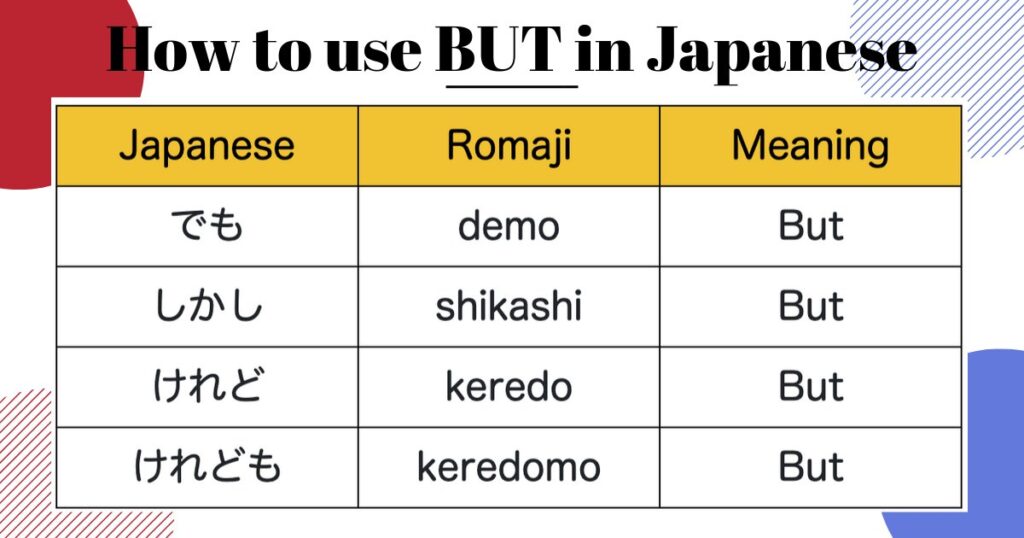In Japanese, “demo” means “but” or “however.” This seemingly simple word carries significant weight in the language, shaping the nuances of communication. Used to express contrast or transition, “demo” plays a crucial role in Japanese conversations, adding depth and complexity to discussions. Understanding its usage can greatly enhance your grasp of the language and help you navigate through various social contexts effortlessly. Let’s delve deeper into the intricacies of what does demo mean in Japanese.
What Does “Demo” Mean in Japanese
Welcome to our blog where we will dive into the fascinating world of the Japanese language. In this article, we will explore the meaning and usage of the word “demo” in Japanese. Whether you are a language enthusiast or just curious about different cultures, understanding words in other languages can be both enriching and exciting. So, let’s embark on this linguistic journey together as we unravel the mysteries of “demo” in Japanese!
The Basics of the Japanese Language
Before we delve into the specific meaning of “demo,” let’s first familiarize ourselves with the basics of the Japanese language. Japanese is a language spoken by over 125 million people around the world, primarily in Japan. It is known for its unique writing system that includes three scripts: hiragana, katakana, and kanji.
Japanese grammar and vocabulary are quite different from English, making it a fascinating language to study. One essential aspect of learning Japanese is understanding how particles are used to indicate the relationship between words in a sentence. One such particle is “demo,” which plays a crucial role in Japanese sentences.
Understanding the Particle “Demo”
In Japanese, particles are small words that are attached to nouns, pronouns, and phrases to indicate their grammatical function in a sentence. The particle “demo” is one such versatile word that has multiple meanings depending on its context.
The primary function of “demo” is to express contrast or concession in a sentence. When “demo” is used, it often signifies a shift in the conversation or introduces a different perspective. Think of it as a way to say “but” or “however” in English.
Usage of “Demo” in Japanese Sentences
Let’s look at some examples to understand how “demo” is used in Japanese sentences:
Example 1: 彼は学生ですが、弁護士になりたいです。
Translation: He is a student, but he wants to become a lawyer.
Example 2: 今日は雨ですが、映画を見に行きます。
Translation: It is raining today, but I will go to watch a movie.
In these examples, “demo” is used to introduce a contrasting idea or to present a different perspective from what was previously mentioned in the sentence.
Other Meanings and Usage of “Demo”
While the primary function of “demo” is to express contrast, this versatile particle can also be used in other contexts in Japanese. Here are some additional meanings and usage of “demo”:
1. “Demo” as “But” or “However”
As mentioned earlier, “demo” is commonly used to indicate a contradiction or contrast in a sentence. It can be translated as “but” or “however” in English, highlighting a shift in the information being presented.
2. “Demo” as “For Example” or “Such as”
Another way “demo” is used in Japanese is to provide examples or illustrate a point further. In this context, “demo” can be translated as “for example” or “such as,” helping to clarify or expand on the topic at hand.
3. “Demo” as “Even”
Additionally, “demo” can be used to convey the meaning of “even” in Japanese sentences. This usage emphasizes the unexpectedness or extremity of a situation, adding emphasis to the statement.
Common Mistakes When Using “Demo”
While “demo” is a versatile and essential particle in Japanese, learners often struggle with its precise usage. Here are some common mistakes to avoid when using “demo” in sentences:
1. Overusing “Demo”
One common mistake is overusing “demo” in sentences where it may not be necessary. Remember that “demo” is used to indicate contrast or concession, so using it excessively can make your sentences sound unnatural.
2. Misinterpreting the Context
Another pitfall is misinterpreting the context in which “demo” should be used. Take the time to understand the nuances of each situation and use “demo” appropriately to convey the intended meaning.
3. Failing to Connect Ideas
Ensure that the ideas presented before and after “demo” are connected logically in your sentence. Using “demo” without a clear transition can lead to confusion for the reader or listener.
In conclusion, the particle “demo” in Japanese plays a vital role in expressing contrast, concession, and providing examples in a sentence. By understanding its various meanings and usage, you can enhance your proficiency in Japanese and communicate more effectively. Remember to practice using “demo” in different contexts to master its application in conversation and writing. Embrace the beauty of the Japanese language and enjoy exploring its intricacies through particles like “demo”!
We hope this article has shed light on the meaning of “demo” in Japanese and inspired you to continue your journey of language learning. Stay curious, keep practicing, and immerse yourself in the rich tapestry of Japanese culture and communication. Arigatou gozaimasu for joining us on this linguistic adventure!
What Does Demo Mean? – Japan Past and Present
Frequently Asked Questions
What is the meaning of “demo” in Japanese?
In Japanese, “demo” (でも) is a versatile word that is commonly used to mean “but” or “however” in a sentence. It is often used to introduce contrasting information or to indicate a shift in the topic being discussed.
How is “demo” used in Japanese sentences?
“Demo” is frequently used to connect two contrasting ideas or clauses within a sentence. For example, you might say, “I like ice cream, but I’m lactose intolerant” in Japanese as “Watashi wa aisu ga suki desu, demo nyūseki ga nigate desu” using “demo” to denote the contrast.
Can “demo” also mean “for example” in Japanese?
Yes, in addition to signaling contradiction or contrast, “demo” can also be used to mean “for example”. When used in this context, it serves to provide examples or illustrations to clarify the preceding statement.
Final Thoughts
In conclusion, “demo” in Japanese means “but” or “however.” It is a versatile word that is commonly used in everyday conversations to express contrast or contradiction. Understanding the meaning of “demo” is essential for grasping the nuances of Japanese expression. So, next time you hear “demo” in a conversation, remember it signifies a shift in the discussion. Mastering the usage of “demo” will undoubtedly enhance your comprehension of the Japanese language.
 home depot coupons moving helping customers save on essential home supplies
home depot coupons moving helping customers save on essential home supplies 
